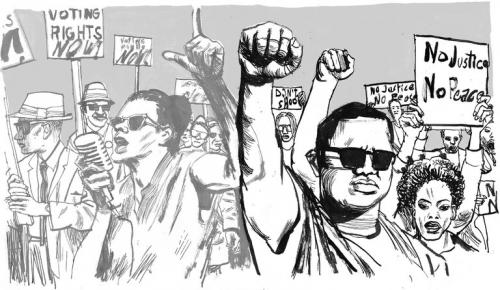
November 21, 2017
LAST week, the editors of GQ named the quarterback Colin Kaepernick its Citizen of the Year for his work protesting racial injustice. Mr. Kaepernick has been heavily criticized by people like President Trump, who claims that an N.F.L. player who kneels during the playing of the national anthem “disrespects our flag” and should be fired; others argue that he is out of bounds as an activist who mixes sports with politics.
The problem is that Mr. Kaepernick’s critics, and most of America, don’t really understand how protests work. Our textbooks and national mythology celebrate moments when single acts of civil disobedience, untainted by political organizations, seemed to change the course of history. But the ideal of the “good” protest — one that materialized from an individual’s epiphany — is a fantasy. More often, effective protest is like Mr. Kaepernick’s: it’s collective and contingent and all about long and difficult struggles.
Consider what most Americans would agree were two “good” protests: Rosa Parks’s refusal to move to the back of a bus in Montgomery, Ala., and the student sit-ins at a Woolworth lunch counter in Greensboro, N.C. Parks, the story goes, was exhausted from a day’s work and took a seat in the “whites only” section. To the astonishment of onlookers, she refused to give up her seat when asked. In Greensboro, black college students decided to eat at the local five-and-dime and initiated the first sit-in at a segregated Southern restaurant. They were idealistic and perhaps naïve.
These stories follow a set narrative. They are “firsts”: the first time a black woman refused to give up her seat or the first time students staged a sit-in. They seemed to arise spontaneously when someone fed up with unfair treatment couldn’t take it anymore. Good protesters act as individual citizens, untainted by associations with suspect political organizations.
Read the full article at NYTimes.com.